Several fiery conflagrations struck the western town of Phoenix before the citizens took any measures to create a fire department. Finally, on Aug. 17, 1886, a special bond issue was passed that raised $10,000 to improve the water supply, purchase modern firefighting equipment and form Phoenix Engine Company #1. It was strictly a volunteer fire company with a charter membership of 25 men.
A Nott steam fire engine, a hook and ladder wagon, two hose carts and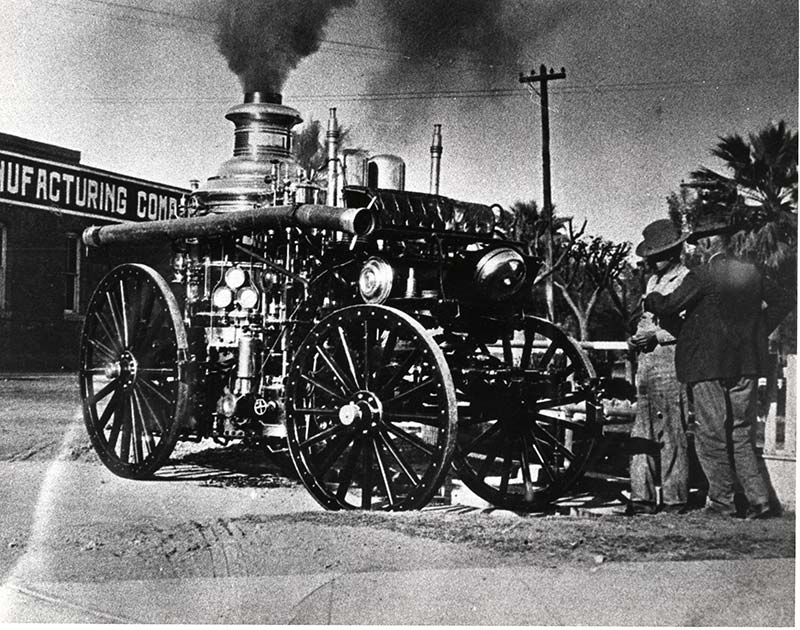 1,000 feet of fire hose were purchased for $5,000. Prior to delivery of the new equipment in the spring of 1887, other volunteer companies were organized. On Feb. 12, 1887, the Aztec Hook and Ladder Company No. 1 was formed. There was also a Pioneer Hose Company No. 1 and a mostly Hispanic group that became known as Yucatec Hose Company No. 2.
1,000 feet of fire hose were purchased for $5,000. Prior to delivery of the new equipment in the spring of 1887, other volunteer companies were organized. On Feb. 12, 1887, the Aztec Hook and Ladder Company No. 1 was formed. There was also a Pioneer Hose Company No. 1 and a mostly Hispanic group that became known as Yucatec Hose Company No. 2.
Bitter rivalry between the different volunteer companies led Frank Czarnowski to unite the companies and, on April 13, 1888, he became the first Chief of the Phoenix Volunteer Fire Department.
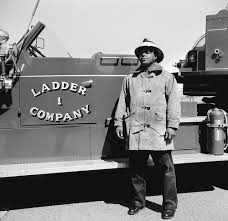 In 1894, the Central Fire Station was built on the northeast corner of First and Jefferson streets on the same block that City Hall sat on. Before the building of Central Station, the equipment was housed behind members' homes or next to business establishments. The first firehouse was an impressive two-story block building with four separate sets of bay doors - one for each company.
In 1894, the Central Fire Station was built on the northeast corner of First and Jefferson streets on the same block that City Hall sat on. Before the building of Central Station, the equipment was housed behind members' homes or next to business establishments. The first firehouse was an impressive two-story block building with four separate sets of bay doors - one for each company.
When the Central Station was completed, a 1,222 pound bell was ordered, received and hung in the wooden tower on top of Central Station. The bell tolled according to the location of the fire. As the city was divided into a four ward system, the fire bell would sound once for ward one, twice for ward two, and so on. The town only measured .5 square miles at the time. One look in the direction of the designated ward told the firemen where the fire was. Unfortunately, the bell proved to be too heavy for the rafters of the station and had to be moved to a steel frame tower on City Hall.
A fire alarm system was set up in 1896. Fifteen alarm boxes were connected to the Central Station. A paid, full time fire department was still a few years away in 1898, but on July 1 of that year, the first paid member was hired. Billy Simmons was employed as a custodian of the firehouse and caretaker of the equipment. Later, he would become the chief.
By 1908, the Phoenix Fire Department consisted of six companies with no more than 25 members each. There were five full-time paid positions - three drivers, one house captain and one extra man. There were six head of horses and the apparatus included one second size Nott engine, one third size Ahrens engine, two combination hook and ladder and chemical trucks, one hose wagon, two hose carts and about 4,000 feet of cotton hose. They also had a first class eight gallon double tank chemical engine. This was later bought by Chief George Simpson and is now in the Hall of Flame, the only piece of Phoenix's volunteer fire department to survive today.
On May 17, 1910, one of Phoenix's most famous early-day fires took place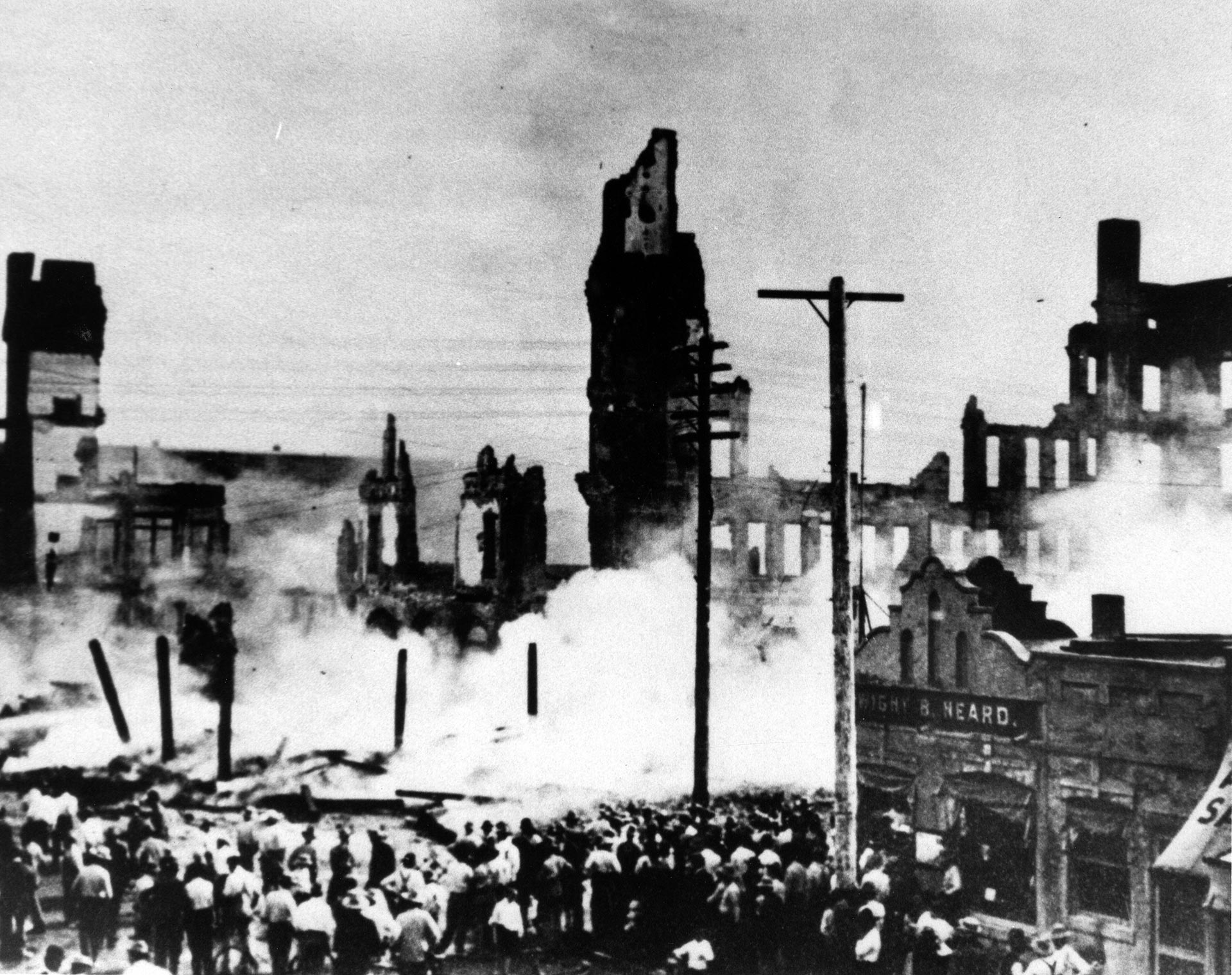 when the Adams Hotel, a four-story wooden structure, burned to the ground in spite of all efforts by firemen. However, no one was killed.
when the Adams Hotel, a four-story wooden structure, burned to the ground in spite of all efforts by firemen. However, no one was killed.
In 1914, two new stations were built and the gong system was now in effect. Whenever a call was received on the "99," the phone line at Central Station headquarters, the dispatcher would tap out the type of call over the telegraph lines to all stations. This would ring the gongs in all stations.
Also in 1914, the days of the fire horses came to an end. Three 325gpm chain driven, white, 1914 Seagraves Type 19 fire trucks were purchased.
The department gradually changed from volunteer to a paid, full-time organization. By 1922, the transition was completed.
The first motorized ladder truck of the Phoenix Fire Department was a rigid frame 75 foot 1921 American LaFrance. The department still has it.
In 1924, the department split into a two shift system, A and B shift, each working every other day.
On Dec. 9, 1929, the Phoenix Fire Department suffered its first fatalities in the line of duty. While responding to a call, Squad 1 and Engine 2 crashed into each other at 14th and Van Buren streets. Captain Jack Sullivan of the Squad was killed immediately. Ambrose Shea died from injuries the next day.
The fire department struggled through the 1930s to bring itself up to national standards. New innovations were tried. Gas masks were used for the first time. Resuscitators were acquired to use on drowning patients. Inhalators were first carried on Squad 1. In 1935, the Fire Prevention Bureau was created. On Nov. 6, 1936, Phoenix firemen joined the International Association of Firefighters and formed Local 493.
In 1947, C Shift was created. For a brief period during the 1940s, firemen were expected to repair small equipment for the Parks Department and some patrolled with police officers as hybrid firemen-cops.
During the 1950s, James Wesley Robinson joined the Phoenix Fire Department, the first black man to do so. Alarm Headquarters was taken out of Station 1 and established in a separate building at 131 N. Ninth St. More emphasis was put on
fire prevention. The city now had 12 fire stations. A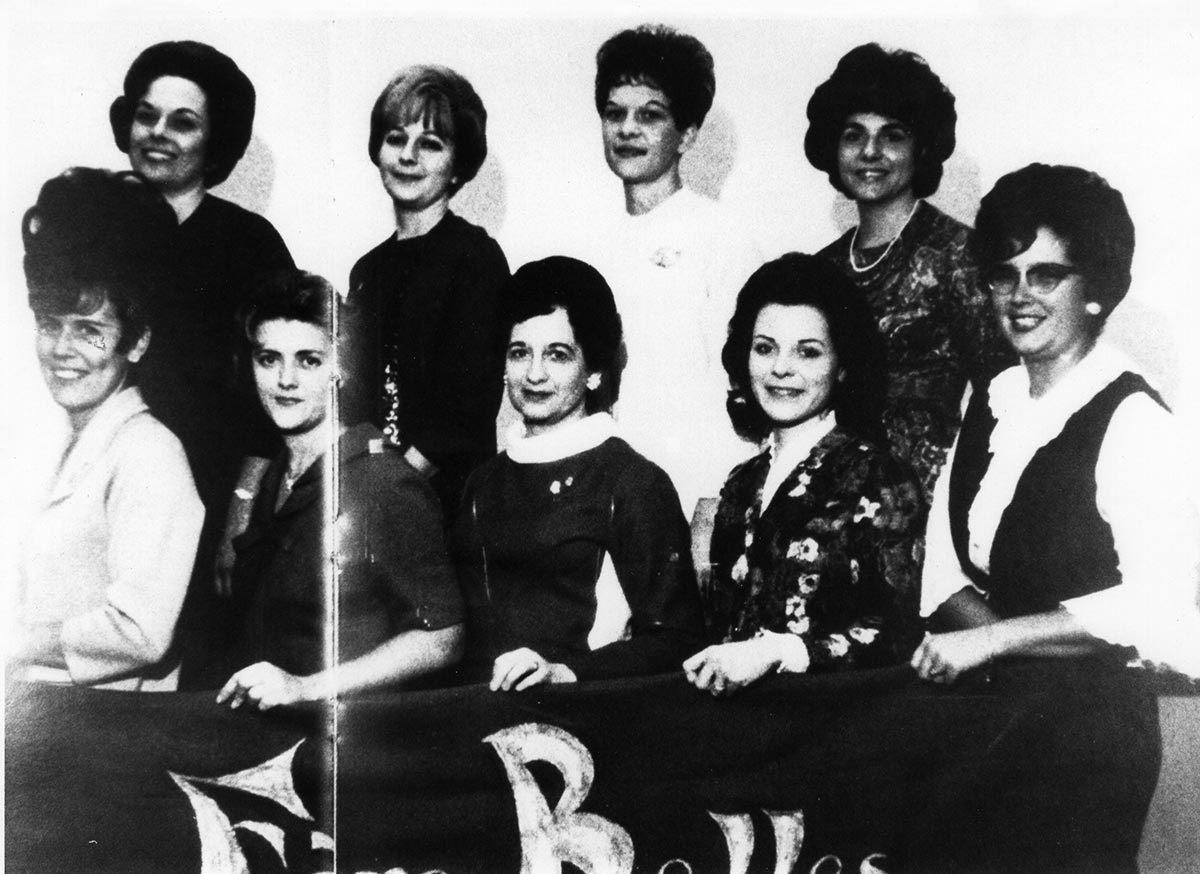 new group called the Ladies Auxiliary to the International Association of Firefighters, known as the Fire Belles, was formed.
new group called the Ladies Auxiliary to the International Association of Firefighters, known as the Fire Belles, was formed.
In the 1960s, the first fire station was opened at Sky Harbor Airport. In 1965, the first high-rise fire took place at Camelback Towers. The Training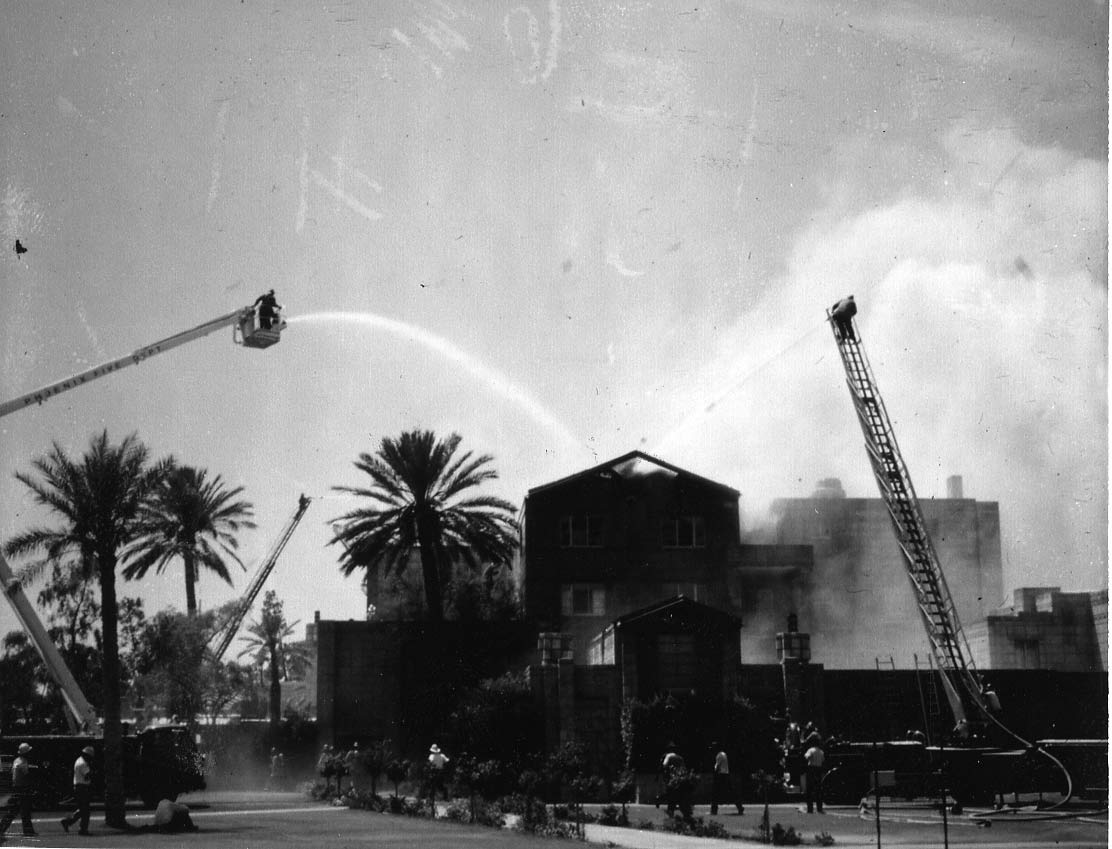 Academy opened in 1968.
Academy opened in 1968.
The 1970s saw a lot of changes. In 1971, the early retirement bill allowed years of service for retirement lowered to 20.
Emergency Medical Services started to become a big part of the Phoenix Fire Department. In 1971, the first firefighters to become EMTs did so. The first Rescue Unit was put in service in 1973. The next year, the first two Phoenix firefighters were certified to become paramedics. On Aug. 5, 1974, the ARA fire took place. Firefighter Randy Potts was injured and died the next day. The Arson Task Force was formed in 1978 and the Hazardous Materials team started responding to incidents. Plus, the NFPA's Learn Not to Burn Program was piloted in Phoenix. On August 5, 1979, firefighter Dale Lockett was killed in a house fire.
The 1980s opened with the new Computer Aided Dispatch System starting and the first two female firefighters in the Phoenix Fire Department. Valley of the Sun municipal department firefighters all became a part of one union (Local 493) in 1984. The Phoenix Fire Department also started its debriefing program. On Nov. 15, 1984, firefighter Ricky Pearce was killed in a toluene explosion. The year 1985 was a banner year for the Phoenix Fire Department: the Maricopa County 9-1-1 system went into effect, Phoenix Fire Department ambulances were put in service, labor/management started productivity agreement and the Health and Fitness Center was dedicated.
The decade of the 1990s continued to be one of progress and advancement. The Phoenix Fire Department became part of the Federal Urban Search and Rescue network in 1991. Ladder tenders were introduced to help with the wear and tear on ladder trucks and streets. Unfortunately, firefighter Tim Hale was killed in the line of duty on Feb. 12, 1994.
The Phoenix Fire Department has approached the 21st Century with a respect for change. After the death of Firefighter/Paramedic Bret Tarver on March 14, 2001 in a supermarket fire, we looked at how we could improve our procedures further. This was done through a "Recovery Process." Over the course of a year, department officials identified how we could improve safety, and implemented new procedures through additional firefighter training.
As we continue to evolve, we will respect the past, respond to the present, and implement with the future in mind.
Portions of the above historical content are excerpts from, Up From The Ashes, by author and retired Phoenix Firefighter Harrold Shell.
